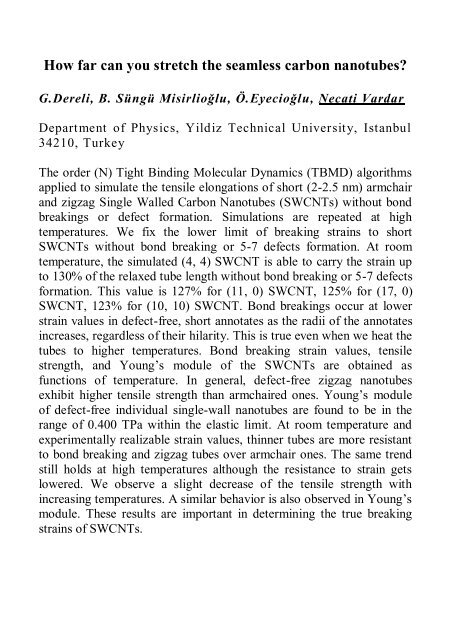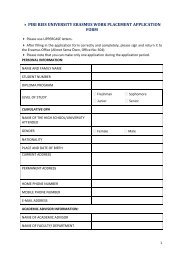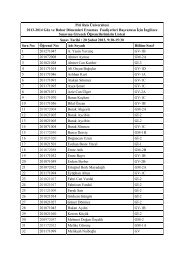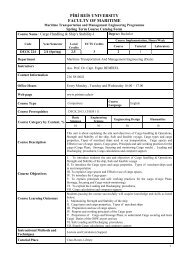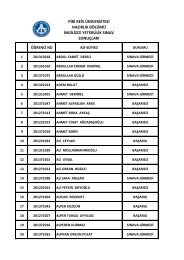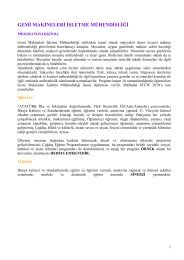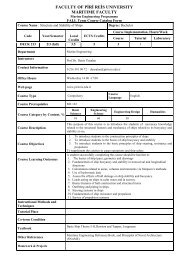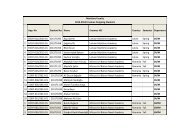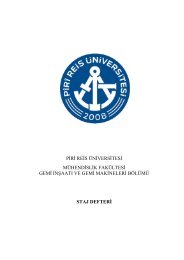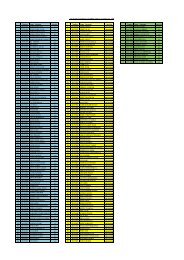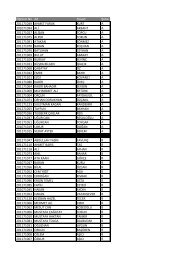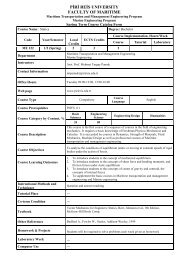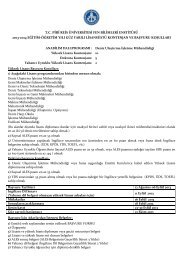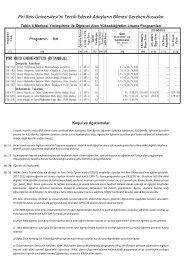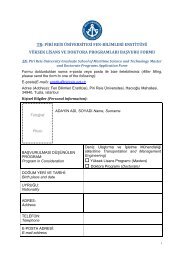16.Ulusal Sıvıhal FiziÄi Sempozyumu - Piri Reis Ãniversitesi
16.Ulusal Sıvıhal FiziÄi Sempozyumu - Piri Reis Ãniversitesi
16.Ulusal Sıvıhal FiziÄi Sempozyumu - Piri Reis Ãniversitesi
You also want an ePaper? Increase the reach of your titles
YUMPU automatically turns print PDFs into web optimized ePapers that Google loves.
How far can you stretch the seamless carbon nanotubes?<br />
G.Dereli, B. Süngü Misirlioğlu, Ö.Eyecioğlu, Necati Vardar<br />
Department of Physics, Yildiz Technical University, Istanbul<br />
34210, Turkey<br />
The order (N) Tight Binding Molecular Dynamics (TBMD) algorithms<br />
applied to simulate the tensile elongations of short (2-2.5 nm) armchair<br />
and zigzag Single Walled Carbon Nanotubes (SWCNTs) without bond<br />
breakings or defect formation. Simulations are repeated at high<br />
temperatures. We fix the lower limit of breaking strains to short<br />
SWCNTs without bond breaking or 5-7 defects formation. At room<br />
temperature, the simulated (4, 4) SWCNT is able to carry the strain up<br />
to 130% of the relaxed tube length without bond breaking or 5-7 defects<br />
formation. This value is 127% for (11, 0) SWCNT, 125% for (17, 0)<br />
SWCNT, 123% for (10, 10) SWCNT. Bond breakings occur at lower<br />
strain values in defect-free, short annotates as the radii of the annotates<br />
increases, regardless of their hilarity. This is true even when we heat the<br />
tubes to higher temperatures. Bond breaking strain values, tensile<br />
strength, and Young’s module of the SWCNTs are obtained as<br />
functions of temperature. In general, defect-free zigzag nanotubes<br />
exhibit higher tensile strength than armchaired ones. Young’s module<br />
of defect-free individual single-wall nanotubes are found to be in the<br />
range of 0.400 TPa within the elastic limit. At room temperature and<br />
experimentally realizable strain values, thinner tubes are more resistant<br />
to bond breaking and zigzag tubes over armchair ones. The same trend<br />
still holds at high temperatures although the resistance to strain gets<br />
lowered. We observe a slight decrease of the tensile strength with<br />
increasing temperatures. A similar behavior is also observed in Young’s<br />
module. These results are important in determining the true breaking<br />
strains of SWCNTs.


